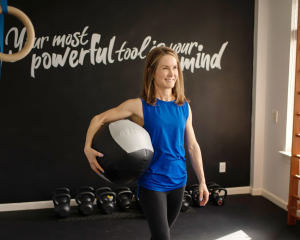Most of you already know 70 percent of New Year’s resolutions do not last past January. So instead of the typical fitness blogger talking about resolutions, I’m going to talk about something that’s more important for your health, and more likely to work than a resolution, and that is how to create a habit that will last. In this four-part series, we’ll explain why, especially after 30, establishing a fitness habit is critical for your life span, how finding the right fitness program is the key to a healthier you, and how to make the habit stick.
NOW is the time to get moving. This is an article of truth. I’m not going to sugar coat the data. We all know when we were in our 20s and 30s, we could go for days, possibly weeks, without exercise and see very few negative effects like energy loss, weight gain, muscle loss, stagnation, etc. For many of us, we’d just watch the calorie intake and “fix” the no-exercise with a pattern of scaling back on food to “make up” for our laziness. Then, our bodies were still, in a way, growing, so the effects of no exercise were not obvious.
The aging process is like a freight train that’s rolling downhill. If you want to apply the brakes, you can’t afford to delay.
from “Just Move” by James P. Owen
Your Fitness Age…and why it matters
Did you know that your chronological age is not the best indicator of life span. Scientists can now measure your fitness age, which medical doctors are adopting as a better indicator of life span. Fitness age is determined by using a combination of your VO2Max, your Waist Circumference, your Resting Heart Rate, and your Exercise Habits.
What do those terms mean?
VO2Max: A measure of your maximal aerobic capacity. As your aerobic fitness increases, your VO2Max increases. It is the highest rate at which you can transport oxygen to your muscles so muscles can produce.
Waist Circumference: Quite simply, it should not be greater than 35 for men or 32 for women.
Resting Heart Rate: Check it often. You want between 60-100, although I promise you will see it closer to 60, and possibly below like mine, if you exercise every day.
Exercise Habits: This is the big kahuna and what separates success from failure. We’ll write a whole article on this in part 4 of this series.
What will help with each one of these metrics?
Exercise
And here is where most of us struggle. We have great intentions to get healthier and move more, but we consistently jump on and then just as quickly fall off the exercise bandwagon. Why? Many times it’s because we try to do it on our own. How many times have you joined a gym thinking you’d hit the weights or sign up for classes, but then you end up essentially making a monthly donation to your gym. Which, by the way, the big gyms love you for!
So how do you break this trend? Instead of tackling your goal alone, or signing up for classes where you’re just another body in a crowded room (20 people pounding it out on a treadmill, anyone?), why not try small group training? With small group training you’ll get the benefits of having a your own personal trainer but at half the cost and the moral support, motivation, and accountability that comes with being around people with similar attitudes and goals toward health and fitness. And, NO INJURY!



